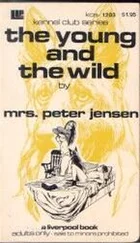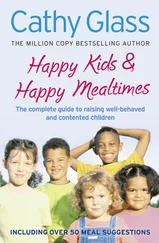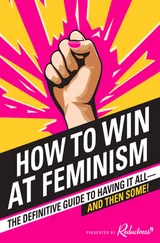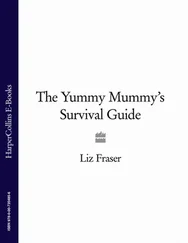The woman ended her e-mail with a simple question: “How do I help him?”
Letters and e-mails and calls like these are what prompted me to write this book. Nine months after that mother asked how she could help her son, I received a similar e-mail, this time from the mother of an eighteen-year-old girl. Her daughter, who had once seemed so levelheaded, she wrote, had let her grades slip in high school. She became defiant, ran away from home, and was hospitalized for depression. “This year has been difficult for us,” the mother wrote. “Sometimes it seems as if she has been replaced by an alien. It is because of the behavior and the things that she says. She is a completely different person.”
I knew how these women felt. At one time, I felt helpless, too. Because I was newly divorced as my older son, Andrew, entered adolescence, I was painfully aware that my children’s future, as well as their present, was largely up to me. There was no pulling my hair out and saying, “Go talk to your father about it!” When you’re a single parent, the buck stops with you. As parents, we want to open a few doors for our kids—that’s all, really. To gently nudge them in the right direction. During their childhood, everything seems to go pretty much by plan. Our kids learn what’s appropriate and what isn’t, when to go to bed and when to get up in the morning, what not to touch, where not to go. They learn the importance of school, of being polite to their elders, and when they are physically hurt or emotionally wounded, they come to us seeking solace.
So what happens when they reach fourteen, fifteen, or sixteen years old? How is it that the cute, even-tempered, happy, and well-behaved child you’ve known for more than a decade is suddenly someone you don’t know at all?
These are a few of things I say to parents right off the bat: The sense of whiplash you are feeling is not unusual. Your children are changing, and also trying to figure themselves out; their brains and bodies are undergoing extensive reorganization; and their apparent recklessness, rudeness, and cluelessness are not totally their fault! Almost all of this is neurologically, psychologically, and physiologically explainable. As a parent or educator, you need to remind yourself of this daily, often hourly!
Adolescence is a minefield, for sure. It is also a relatively recent “discovery.” The idea of adolescence as a general period of human development has been around for aeons, but as a discrete period between childhood and adulthood it can be traced back only as far as the middle of the twentieth century. In fact the word “teenager,”as a way of describing this distinct stage between the ages of thirteen and nineteen, first appeared in print, and only in passing, in a magazine article in April 1941.
Mostly for economic reasons, children were considered miniadults well into the nineteenth century. They were needed to sow the fields, milk the cows, and split the firewood. By the time of the American Revolution half the population of the new colonies was under the age of sixteen. If a girl was still single at eighteen, she was considered virtually unmarriageable. Well into the early twentieth century, children over the age of ten, and often children much younger, were capable of most kinds of work, either on the farm or later in city factories—even if they needed boxes to stand on. By 1900, with the Industrial Revolution in full swing, more than two million children were employed in the United States.
Two things in the decades spanning the middle of the twentieth century—the Great Depression and the rise of high schools—not only changed attitudes about the meaning of childhood but also helped to usher in the era of the teenager. With the onset of the Depressionafter the stock market crash of 1929, child laborers were the first to lose their jobs. The only other place for them was school, which is why by the end of the 1930s, and for the first time in the history of American education, most fourteen- to seventeen-year-olds were enrolled in high school. Even today, according to a 2003 survey by the National Opinion Research Center, Americans regard finishing high school as the number one hallmark of adulthood. (In much of the United Kingdom a teenager is treated as an adult even if he or she does not finish high school, and in England, Scotland, and Wales it is legal not only to leave school at age sixteen but to leave home and live independently as well.) In the 1940s and ’50s, American youth, most of whom were not responsible for the economic survival of their families, certainly did not seem like adults—at least not until they graduated from high school. They generally lived at home and were dependent on their parents, and as more and more children found themselves going to school beyond the eighth grade, they became a kind of class unto themselves. They looked different from adults, dressed differently, had different interests, even a different vocabulary. In short, they were a new culture. As one anonymous writer said at the time, “ Young people became teenagersbecause we had nothing better for them to do.”
One man foresaw it all more than one hundred years ago. The American psychologist Granville Stanley Hall never used the word “teenager” in his groundbreaking 1904 book about youth culture, but it was clear from the title of his fourteen-hundred-page tome— Adolescence: Its Psychology and Its Relations to Physiology, Anthropology, Sociology, Sex, Crime, Religion and Education —that he regarded the time between childhood and adulthood as a discrete developmental stage. To Hall, who was the first American to earn a PhD in psychology, from Harvard University, and the first president of the American Psychological Association, adolescence was a peculiar time of life, a distinct and separate stage qualitatively different from either childhood or adulthood. Adulthood, he said, was akin to the fully evolved man of reason; childhood a time of savagery; and adolescence a period of wild exuberance, which he described as primitive, or “neo-atavistic,” and therefore only slightly more controlled than the absolute anarchy of childhood.
Hall’s suggestion to parents and educators: Adolescents shouldn’t be coddled but rather should be corralled, then indoctrinated with the ideals of public service, discipline, altruism, patriotism, and respect for authority. If Hall was somewhat provincial about how to treat adolescent storm and stress, he was nonetheless a pioneer in suggesting a biological connection between adolescence and puberty and even used language that presaged neuroscientists’ later understanding of the malleability of the brain, or “plasticity.” “ Character and personality are taking form, but everything is plastic,” he wrote, referring to pliability, not the man-made product. “Self-feeling and ambition are increased, and every trait and faculty is liable to exaggeration and excess.”
Self-feeling, ambition, exaggeration, and excess—they all helped define “teenager” for the American public in the middle of the twentieth century. The teenager as a kind of cultural phenomenon took off in the post-World War II era—from teenyboppers and bobbysoxers to James Dean in Rebel Without a Cause and Holden Caulfield in The Catcher in the Rye. But while the age of adolescence became more defined and accepted, the demarcation between childhood and adulthood remained—and remains—slippery. As a society, we still carry the vestiges of our centuries-old confusion about when a person should be considered an adult. In most of the United States a person must be between fifteen and seventeen to drive; eighteen to vote, buy cigarettes, and join the military; twenty-one to drink alcohol; and twenty-five to rent a car. The minimum age to be a member of the House of Representatives is twenty-five; to be president of the United States, thirty-five; and the minimum age to be a governor ranges among states from no age restriction at all (six states) to a minimum age of thirty-one (Oklahoma). There is generally no minimum age requirement to testify in most courts, enter into a contract or sue, request emancipation from one’s parents, or seek alcohol or drug treatment. But you must be eighteen to determine your own medical care or write a legally binding will, and in at least thirty-five states those eighteen or younger must have some type of parental involvement before undergoing an abortion. What a lot of mixed messages we give these teenagers, who are not at a stage to weed through the logic (if there is any) behind how society holds them accountable. Very confusing.
Читать дальше












